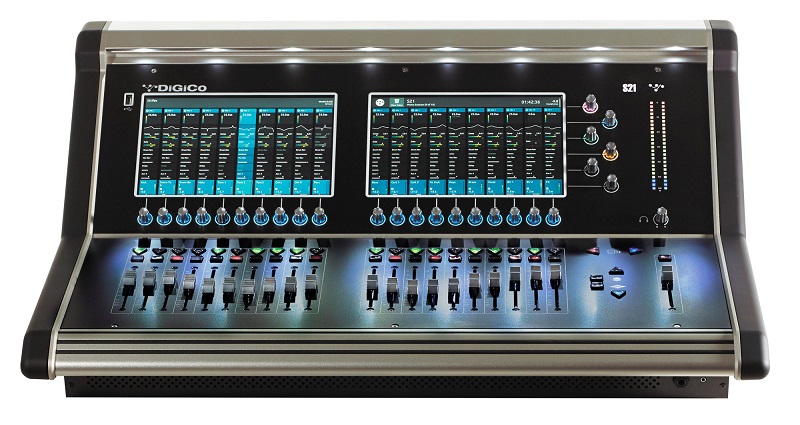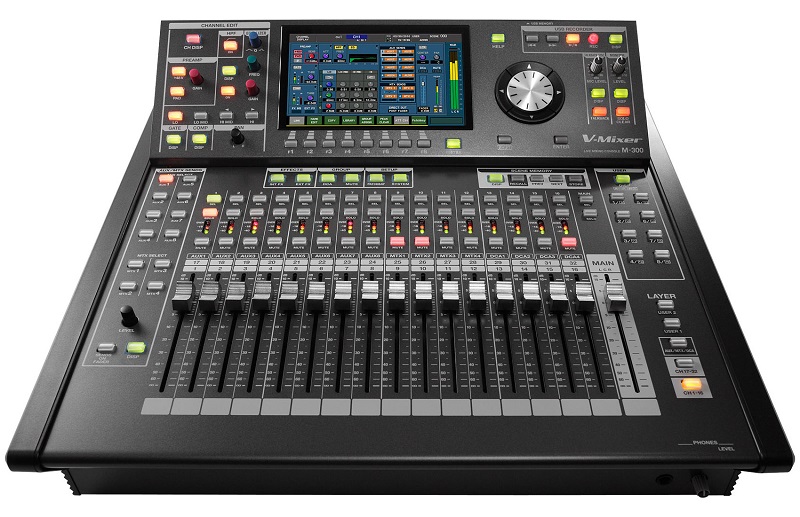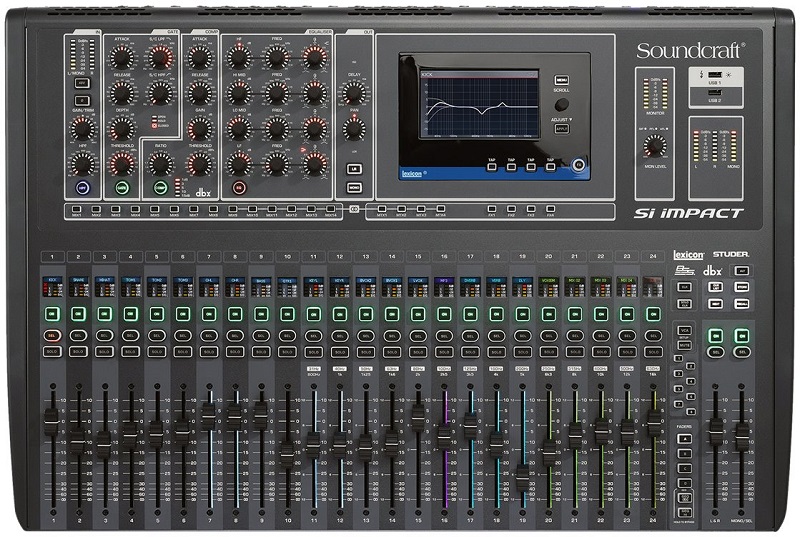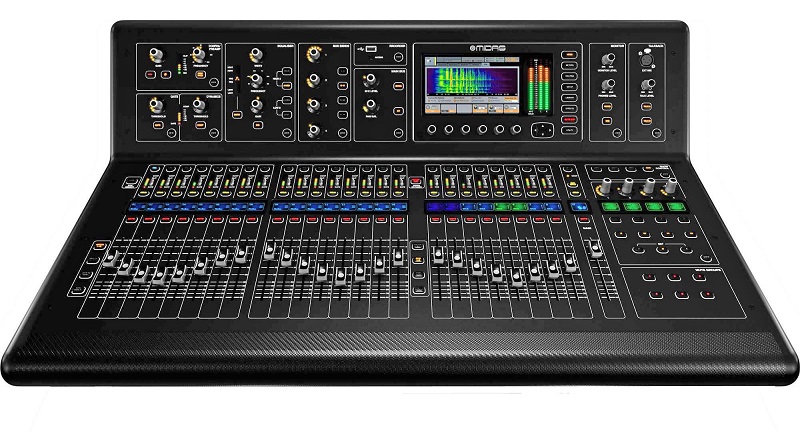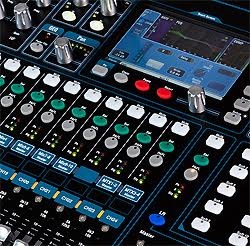
Players To Consider
The price of digital consoles runs from below $2,000 to the price of a new home, but for many small- to medium-sized churches, the right console can be found in the $2,500 to $7,000 price range for major brands.
Models in this range provide similar capabilities, but they do vary (often widely) in terms of interface and functionality. Following are several models in this range, selected with a focus on usability. (All prices were provided by leading retailers.)
The Allen & Heath Qu-series starts below $2,000, with $2,699 the price for a 24-channel model with a small touch screen display and the ability to interface with an iPad (Qu-Pad app). It uses encoders assigned to specific channel tasks such as for gating, compression, and four parametric EQ points.
The Qu-series also includes the FX library from the larger iLive Series. It’s a very user-friendly design style that’s seen with other consoles listed here.
The S21, with 24 input channels, is DiGiCo’s first foray into the sub-$10k market ($7,000) and uses two full-size touch screens for the majority of control. It’s packed with the functionality one expects from DiGiCo, including four multiband compressors, four dynamic EQs, eight stereo effects, and compression, gating and duckers on each I/O. (Not for the faint of heart.)
The Midas M32 ($4,999) is the “big brother” to the Behringer X32. Produced by the same company, the M32 is outfitted with very good pre-amps (the same as found in the larger PRO1 and PRO2 consoles) and the overall quality that comes with the name Midas. It includes a 7-inch screen (though it’s not a touch screen), and uses the knob style similar to the Qu-series.
The PreSonus StudioLive 32.4.2AI ($2,999) provides a straightforward knobs and buttons design joined by a unique control approach with LED strips displaying control settings for easy review of a channel’s settings. It also includes a small non-touch screen with iPad control; however, unlike the other models included here, it doesn’t have motorized faders, which are useful when recalling scenes. It does offer scene recall.
PreSonus also offers the CS18AI control surface ($1,999) with motorized faders, though it’s for use with the company’s RM32AI rack-mounted mixer ($1,799). This package, with a full-size touch-screen (around $1,700), makes for a very powerful system of up to 64 channels.
Soundcraft has two entries worthy of consideration, though with significant differences. The Si Expression Series provides the quality and sound expected from Soundcraft, though with a small digital screen that pretty much demands an iPad. The Si Impact, with 32 inputs, includes a 5-inch touch screen as well as scribble strip channel labeling. Both offer the single channel-at-aglance knob control configuration.
The Si Expression 32 lists at $3,199, with the Si Impact is at $2,299. The recently introduced Yamaha TF Series is the biggest departure as far as the control interface. Instead of a knobheavy design, there’s a handful of controls joined by the touch screen as the primary interface. A “touch-one” knob provides easy access to whatever control the user has selected on screen. Also included are two-finger controls such as for setting EQ bandwidth and height, as well as left/right screen swiping to move between control screens. It also includes recallable Yamaha D-PRE preamps. A 24-channel TF3 lists at $2,999.
The V-Mixer Series from Roland Pro AV offers several options, including the M-200i ($2,495) and M-300 ($3,995), both offering 32 channels. The M-200i has a smaller screen onboard and is controllable with or without an iPad. (iPad not included.) It also includes four multi-effect processors and four 31-band graphic EQ units. The M-300 has a larger screen, as well as 4-band parametric EQ and dynamics on all channels. Both also have an array of dedicated buttons and knobs for key functions.
All of these models offer plenty of I/O capability and numerous other handy features. Just remember, the right console is determined only after thoroughly examining all of the factors noted here.
Only then will you be able to look back on the purchase in a year and say it was money well spent.
Ready to learn and laugh? Chris Huff writes about the world of church audio at Behind The Mixer. He covers everything from audio fundamentals to dealing with musicians, and can even tell you the signs the sound guy is having a mental breakdown.

